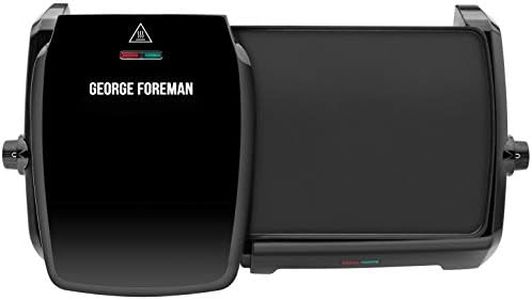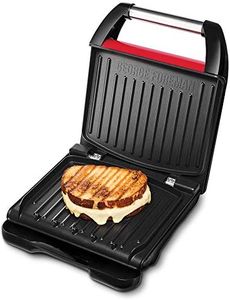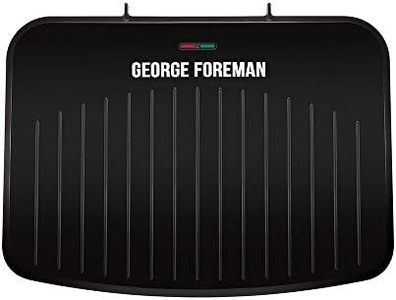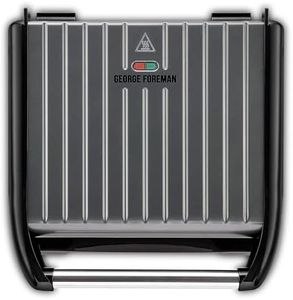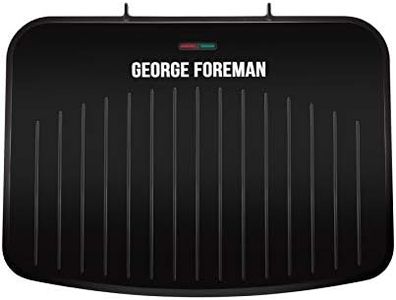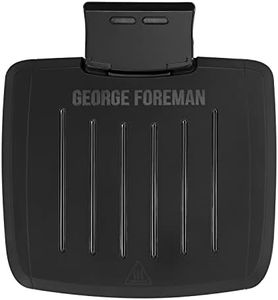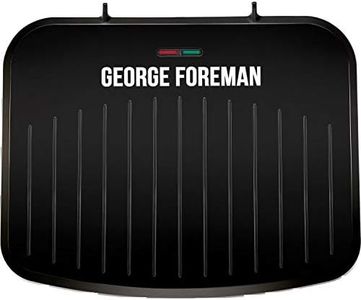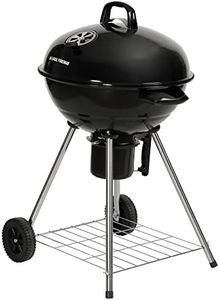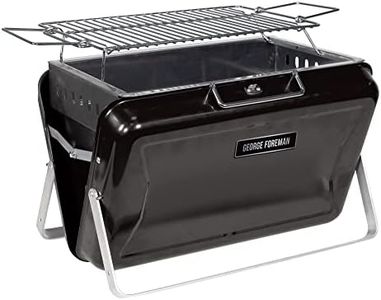We Use CookiesWe use cookies to enhance the security, performance,
functionality and for analytical and promotional activities. By continuing to browse this site you
are agreeing to our privacy policy
10 Best George Foreman Grills
From leading brands and best sellers available on the web.Buying Guide for the Best George Foreman Grills
Choosing the right indoor grill, often referred to as a George Foreman grill, can really transform your home cooking. These grills are loved for their convenience and ability to quickly prepare a variety of meals with less fuss than traditional grilling. When picking the best grill for yourself, it's important to look beyond the brand name and focus on important features that will match the way you plan to use it—whether that's for simple sandwiches, family dinners, or healthy meal prep.Cooking Surface SizeThe cooking surface size tells you how much food you can fit on the grill at one time. Smaller grills are great for one or two people, or if you're short on storage or counter space. Medium sizes fit about 2–4 servings and are versatile for most homes. Large grills can handle 4 or more servings at once, perfect for bigger families or if you like hosting. To pick the right size, think about how many people you'll usually be grilling for—if it's just for you, go small, but if you cook for a group, a larger surface makes meal prep smoother and faster.
Removable PlatesSome grills have removable plates, which are the pieces that touch your food. This is an important feature to consider because removable plates are so much easier to clean—often dishwasher-safe—while fixed plates can be more troublesome to wipe down thoroughly. If convenience and quick clean-up matter to you, aim for a grill with removable plates. If you're comfortable with a bit of extra cleaning or use the grill rarely, you might be satisfied with fixed plates.
Adjustable Temperature ControlTemperature control allows you to adjust the heat level for different types of food. Some grills only have a single preset heat, while others offer dials or buttons to set the temperature. If you want more control to cook a variety of things (like thicker meats, vegetables, or paninis), an adjustable temperature is valuable. If you mostly want a grill for simple items like sandwiches or burgers, a basic one-heat design might work just fine.
Drip Tray/DishA drip tray is a container that collects excess grease and juices that run off your food. This feature is important for easier cleaning and healthier cooking. Some trays slide out smoothly, making them simple to empty and wash, while others may be smaller or harder to access. If you plan to grill often or care about reducing fat, check that the grill has a sturdy, easy-to-remove drip tray.
Nonstick CoatingNonstick coating on the grill plates prevents food from sticking and makes cleaning up much easier. The quality of the nonstick layer can vary; thicker or more durable coatings last longer and reduce the need for oils. If you hate scrubbing and want to keep things healthy, look for grills with a reputation for long-lasting, quality nonstick plates.
Floating HingeA floating hinge is a joint that lets the top plate move up and down to fit thicker food, like stacked sandwiches or thick meats. This is important if you plan to cook uneven or bulkier items—otherwise, the grill might squash your food. If you're only using the grill for thin cuts or regular sandwiches, the hinge style may not matter much, but for thicker foods, a floating hinge gives better, more even results.
Indicator Lights/ReadinessIndicator lights show when the grill is preheated and ready to cook, and sometimes when food is done. This is helpful if you like having clear cues and don’t want to guess if the grill is hot enough. If you want the process as simple as possible, pick a grill with clear indicator lights.
